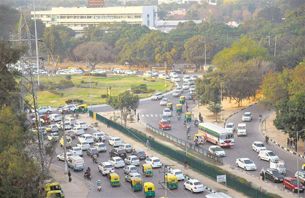
Ash and lava spew from the Villarrica volcano. Reuters file photo
Washington
Through analysis of volcanic tracks, a team of researchers has found that hot spots like those that formed the Hawaiian Islands do not move as quickly as previously thought.
Hot spots are areas where magma pushes up from deep Earth to form volcanoes.
The results from Rice University in Houston, Texas revealed that groups of hot spots around the globe can be used to determine how fast tectonic plates move.
"Averaging the motions of hot-spot groups for individual plates avoids misfits in data due to noise," said a researcher Richard Gordon.
"The results allowed us to say that these hot-spot groups, relative to other hot-spot groups, are moving at about 4 millimeters or less a year,” he added.
They developed a method to analyse the relative motion of 56 hot spots grouped by tectonic plates.
They concluded that the hot-spot groups move slowly enough to be used as a global reference frame for how plates move relative to the deep mantle.
This confirmed the method is useful for viewing not only current plate motion but also plate motion in the geologic past.
Hot spots offer a window into the depths of Earth, as they mark the tops of mantle plumes that carry hot, buoyant rock from deep Earth to near the surface and produce volcanoes. These mantle plumes were once thought to be straight and stationary, but recent results suggested they can also shift laterally in the convective mantle over geological time.
A volcano forms on a tectonic plate above a mantle plume. As the plate moves, the plume gives birth to a series of volcanoes.
They compared the observed hot-spot tracks with their calculated global hot-spot trends and determined the motions of hot spots that would account for the differences they saw.
Their method demonstrated that most hot-spot groups appear to be fixed and the remainder appears to move slower than expected.
For seven of the 10 plates they analysed with the new method, average hot-spot motion measured was essentially zero, which countered findings from other studies that spots move as much as 33 millimeters a year.
Top speed for the remaining hot-spot groups — those beneath the Eurasia, Nubia and North America plates — was between 4 and 6 millimeters a year but could be as small as 1 millimeter per year. That's much slower than most plates move relative to the hot spots.
The study appears in journal of Geophysical Research Letters. — ANI



























